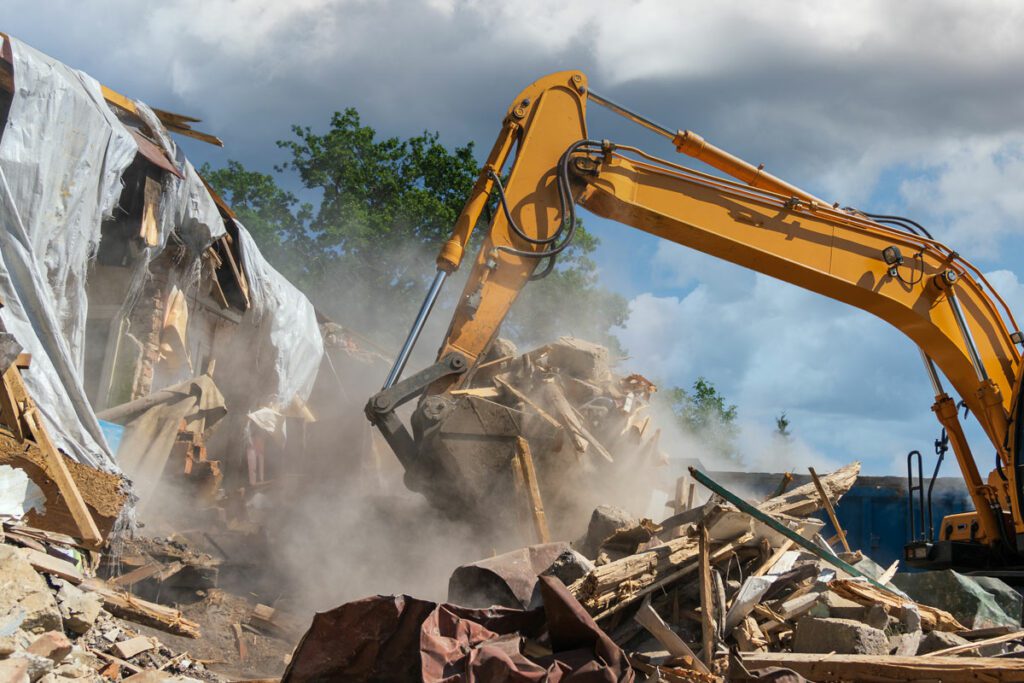

Taking steps to prevent dust particles before they are disturbed and released into the air as fugitive dust is always a favorable idea, adding an extra layer of protection for on-site workers and the surrounding community.
Unfortunately for industrial sites, preventing all dust generation is nearly impossible, but it's still wise to implement prevention methods to reduce migratory dust. Check out Dust Control for Industrial Sites for more dust suppression techniques and tips.
For dust that escapes these prevention methods, using techniques that remove dust from the air is crucial to prevent unnecessary health hazards.
There are 5 main methods on how to prevent dust at industrial job sites, reducing the amount of fugitive dust particles kicked up during operations.

5 MAIN DUST PREVENTION METHODS
Soaking
This method of dust prevention uses copious amounts of water to drench the dust generating material to the point of being too heavy with water to create dust. Fire hoses, industrial sprinklers and water trucks are all common pieces of equipment used in soaking. While this process does stop some dust from being kicked up during operations, it does come with several downsides.
One issue is related to the material needing dust control. The material that is being soaked can be altered due to the over saturation. If soaking is used, make sure the dust source does not need to keep the material in good condition.
Another downside of soaking is the overuse of water. With other methods available, like misting cannons, the amount of water not only over saturates the job site, leaving run-off water all over the place, but it is more expensive to use than more effective, modern systems.
Soaking is a way of the past that is only worthwhile for use on waste debris if no modern method of dust control is available.
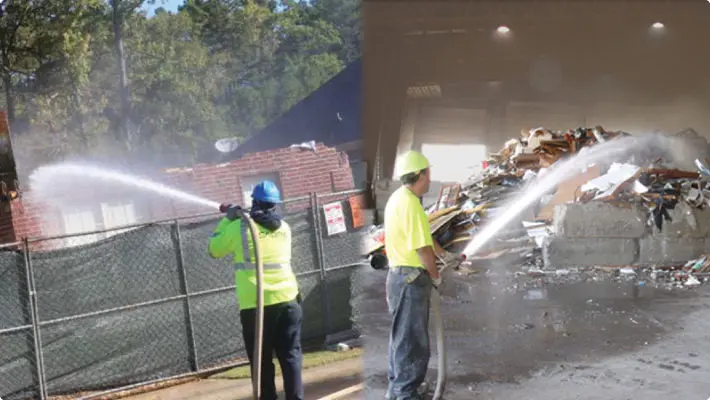
Misting Cannons
An effective, water-based dust prevention method is the use of misting cannons. Unlike soaking, misting cannons bring several positives instead of many negatives.
The one negative that deters many from implementing misting cannons is the initial cost of the equipment. Out of the gate, misting cannons seem like a more expensive option than soaking due to the machinery price. But that is the short term viewpoint, in less than a year misting cannons become more cost efficient than soaking due to significantly less water usage. Water's not free, so the amount misting cannons save on water pays for itself in due time.
A game changing dust prevention technique is the fine mist created by misting cannons that seal the surface of the material without over saturating it. This allows the method to be used on a wide variety of jobs where material composition is essential. With the seal, the amount of dust is reduced when the material is disrupted, and the dust that does escape is quickly brought down with its main function of removing dust from the air.
The mist created by these cannons also reduce the standing water and run-off on-site down to next to nothing thanks to the small particle size and sealing effect.
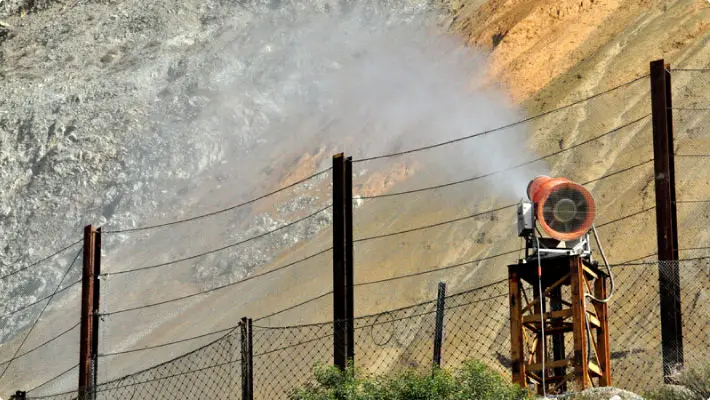
READY FOR A QUOTE?
Talk to a dust control specialist and get a quick quote for your project.
FOAM
Acting as a stationary dust prevention method, foam is sprayed onto dust generating areas to cover materials and prevent dust from being kicked up by natural forces. This foam is easily applied through mixing additives into water through the delivery equipment of spray bars.
Foam is ideal for storing materials, but it's not recommended during their transportation. Foam doesn't provide the most effective prevention if it is disrupted by heavy machinery, but it does create a protective layer on the material that stops dust from kicking up during large winds while in storage.
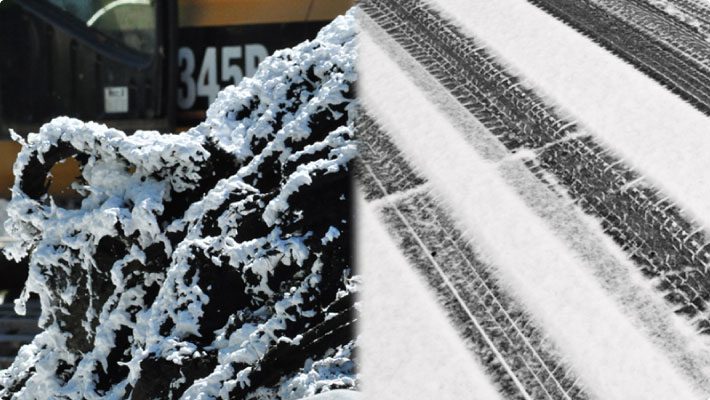
SNOW
This newer method of dust prevention acts similarly to foam. Snow provides excellent dust control during storage, but it is not ideal if the material is in active use or transportation. The snow impedes dust generation during harsh winds thanks to its protective layer.
Unlike foam, the snow is often sprayed onto the storage piles through the use of large snow machines.
SURFACTANTS
Dust preventative surfactants are chemicals mixed into water that bind and create a barrier on the surface of dust generating materials. The surface of the material crusts over due to the reaction with the crusting surfactant and water. This outer layer protects from mild mechanical disruption and wind effects from mother nature.
This method of preventive dust control is recommended for use on less active job sites. Similar to foam and snow, crusting surfactants are ideal for storage stockpiles. Road construction and demolition job sites often use surfactants to lessen the amount of dust kicked up when vehicles drive over active work areas. Road work requires dust control to protect not only the workers on-site but all the drivers on the road.
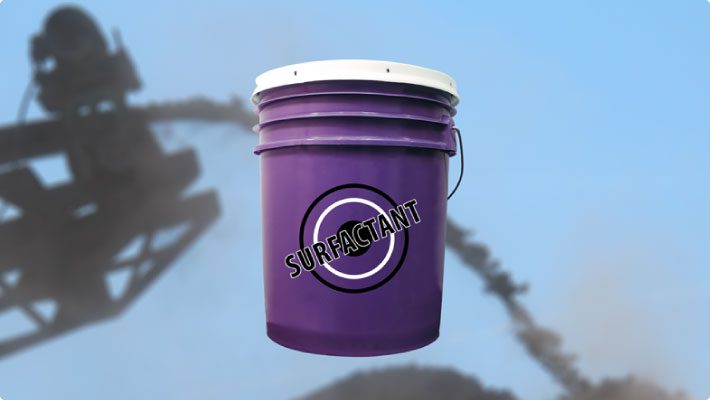
PREVENT DUST AT YOUR JOB SITE!
Receive a FREE quote and talk to a dust control specialist today to implement misting cannons today!
